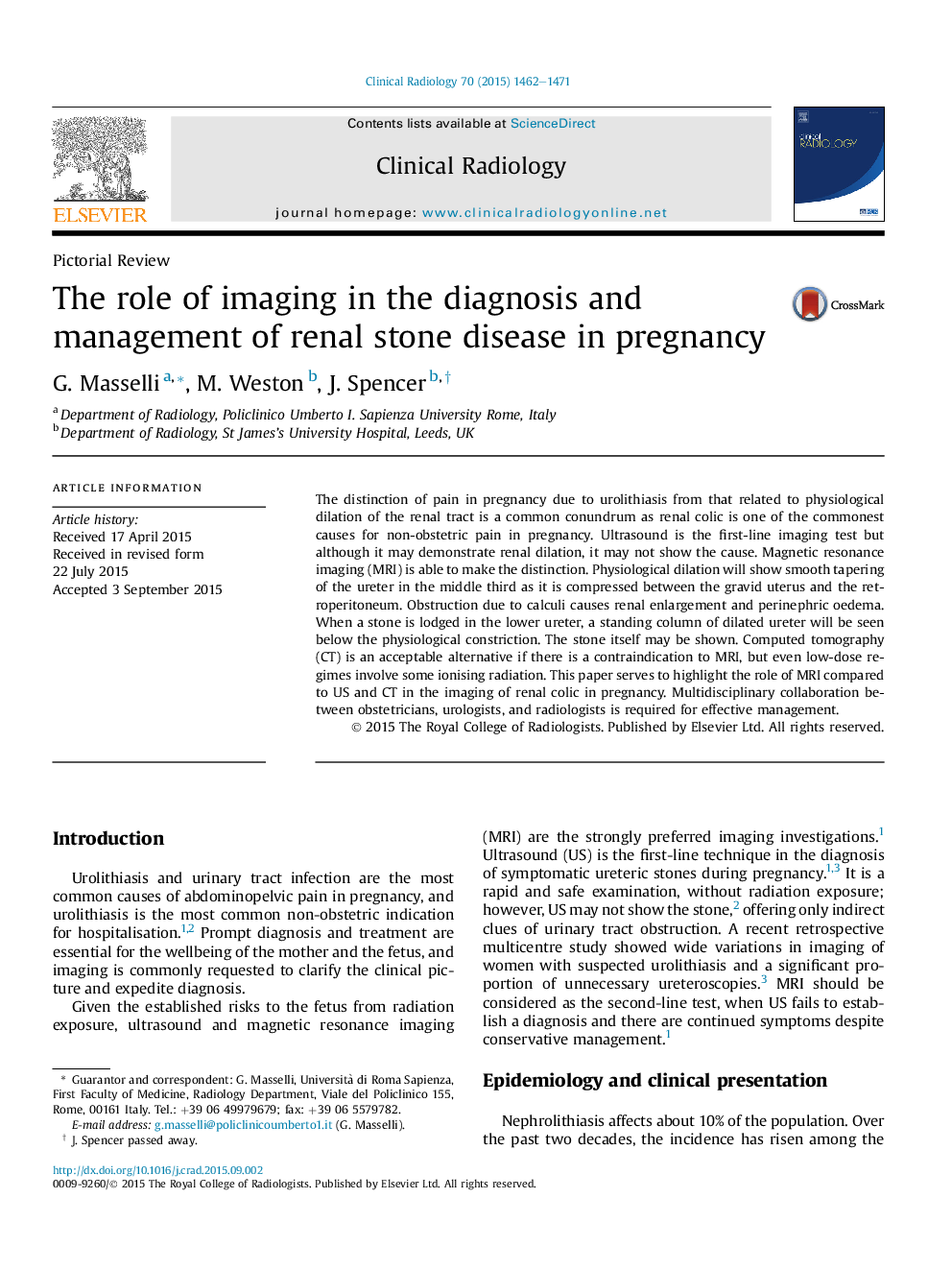| کد مقاله | کد نشریه | سال انتشار | مقاله انگلیسی | نسخه تمام متن |
|---|---|---|---|---|
| 3981367 | 1601151 | 2015 | 10 صفحه PDF | دانلود رایگان |
• Ultrasound and MR imaging are the preferred investigations for renal colic during pregnancy.
• MR imaging helps differentiate physiologic from obstructive hydronephrosis when ultrasound is inconclusive.
• If MR imaging cannot be performed, low-dose CT may be necessary.
The distinction of pain in pregnancy due to urolithiasis from that related to physiological dilation of the renal tract is a common conundrum as renal colic is one of the commonest causes for non-obstetric pain in pregnancy. Ultrasound is the first-line imaging test but although it may demonstrate renal dilation, it may not show the cause. Magnetic resonance imaging (MRI) is able to make the distinction. Physiological dilation will show smooth tapering of the ureter in the middle third as it is compressed between the gravid uterus and the retroperitoneum. Obstruction due to calculi causes renal enlargement and perinephric oedema. When a stone is lodged in the lower ureter, a standing column of dilated ureter will be seen below the physiological constriction. The stone itself may be shown. Computed tomography (CT) is an acceptable alternative if there is a contraindication to MRI, but even low-dose regimes involve some ionising radiation. This paper serves to highlight the role of MRI compared to US and CT in the imaging of renal colic in pregnancy. Multidisciplinary collaboration between obstetricians, urologists, and radiologists is required for effective management.
Journal: Clinical Radiology - Volume 70, Issue 12, December 2015, Pages 1462–1471
